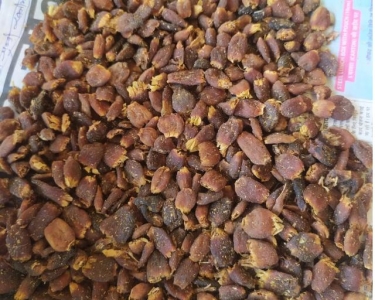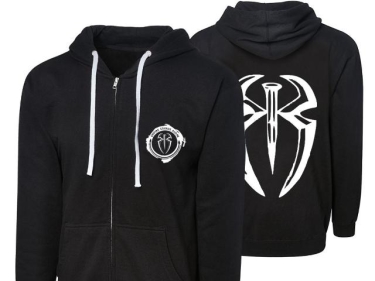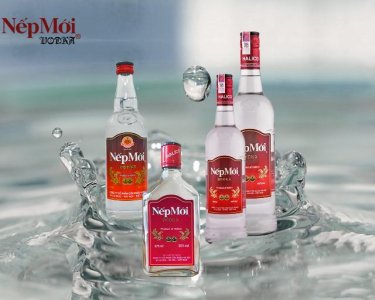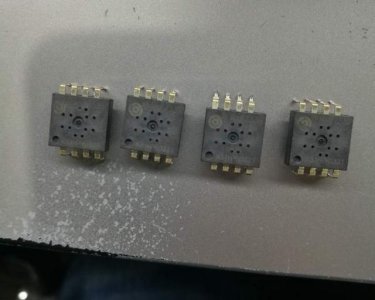Honey
Couldn't find the product you want?
Fill out this form to request the product.
Products You May Like
Export from Turkey
Turkey has the world's 17th largest GDP. The country is among the founding members of the OECD and the G-20 major economies. Turkey's largely free-market economy is increasingly driven by its industry and service sectors, although its traditional agriculture sector still accounts for about 25% of employment. An aggressive privatization program has reduced state involvement in basic industry, banking, transport, and communication, and an emerging cadre of middle-class entrepreneurs is adding dynamism to the economy and expanding production beyond the traditional textiles and clothing sectors. The automotive, construction, and electronics industries are rising in importance and have surpassed textiles within Turkey's export mix.
Turkey has a sizable automotive industry, which produced over a million motor vehicles in 2012, ranking as the 17th largest producer in the world. Turkish shipbuilding exports were worth US$1.2 billion in 2011. The major export markets are Malta, Marshall Islands, Panama and the United Kingdom.
Other key sectors of the Turkish economy are banking, construction, home appliances, electronics, textiles, oil refining, petrochemical products, food, mining, iron and steel, and machine industry.
Turkey major exports are textiles, clothing, cars, iron and steel, refined petroleum, raw iron bars, vehicle parts, delivery trucks, chemicals and pharmaceuticals. Turkey is also one of the leading shipbuilding nations.
Turkey's main export partners are Germany, Iraq, UK, Italy, France.
Import to Turkey
The economy of Turkey is defined as an emerging market economy by the IMF. Turkey is among the world's developed countries. Turkey is also defined by economists and political scientists as one of the world's newly industrialized countries. The country is among the world's leading producers of agricultural products; textiles; motor vehicles, ships and other transportation equipment; construction materials; consumer electronics and home appliances.
The EU accession process has been a significant anchor for reforms in Turkey, but progress has slowed in recent years. The EU is Turkey’s largest economic partner, accounting for around 40 percent of Turkish trade. Turkey has benefited significantly from deepening integration with the EU through the growing sophistication of both exports and imports and access to financing.
Turkey imports mainly machinery, chemicals, semi-finished goods, gold, scrap iron, fuels and transport equipment.
Main import partners of Turkey are Russia, China, Germany, the US, France, South Korea.
Honey has been used by countless cultures all around the world over the past 2,500 years and no wonder! Over its history as a food, the main uses of honey are in cooking, baking, desserts, such as mel i mat, as a spread on bread, and as an addition to various beverages, such as tea, and as a sweetener in some commercial beverages. Honey barbecue and honey mustard are other common flavors used in sauces. Honey is truly a remarkable substance, made even more extraordinary by the process with which it is made. This blend of sugar, trace enzymes, minerals, vitamins, and amino acids is quite unlike any other sweetener on the planet. Also, many honey's health benefits have made it an important element of traditional medicines and scientists also are convinced of honey medicinal value.
Honey has been valued as a natural sweetener long before sugar became widely available in the 16th century. Honey production flourished in ancient Greece and Sicily. Nowadays it's China, Turkey, and Argentina that are the top producers of honey, followed by Ukraine and the United States. Mexico is also an important producer of honey, providing more than 4% of the world's supply. Most of Mexico's Yucatn producers are small, family operations who use original traditional techniques, moving hives to take advantage of the various tropical and subtropical flowers. At Export Portal are presented all the types of honey from all the quality honey producers of the world. We have suppliers of honey from all the countries.
Buying honey can be a tricky process if you don't know what signs of a good hony quality to look fo. We will help you understand what are the indicators of quality of honey.
- High-quality honey can be distinguished by fragrance, taste, and consistency. Ripe, freshly collected, high-quality honey should flow from a knife in a straight stream, without breaking into separate drops. After falling down, the honey should form a bead. The honey, when poured, should form small, temporary layers that disappear fairly quickly, indicating high viscosity. If not, it indicates excessive water content (over 20%) of the product. Honey with excessive water content is not suitable for long-term preservation.
- Crystallized honey, also called "granulated honey" or "candied honey" is not bad, either, it's just honey in which some of the glucose content has spontaneously crystallized from solution as the monohydrate. Honey that has crystallized can be returned to a liquid state by warming.
- Pasteurized honey is honey that has been heated in a pasteurization process which destroys yeast cells. It also liquefies any microcrystals in the honey, which delays the onset of visible crystallization. However, excessive heat during the pasteurization affects appearance - it darkens the natural honey color, changes the taste and fragrance.
We have prepared a classification of honey to help you understand which kinds of honey are there and how they differ. Honey is classified by its floral source, and there are also divisions according to the packaging and processing used. There are also regional honeys. Let's see:
- Usually, honey is classified by the honey's floral source of the nectar from which it was made. Honey is traceable to floral source and therefore region of origin.
- Blended honey means that it is a mixture of two or more honeys differing in floral source, color, flavor, density or geographic origin.
- Polyfloral honey, also known as wildflower honey, derives from the nectar of many types of flowers. The taste may vary from year to year, and the aroma and the flavor can be more or less intense, depending on which bloomings are prevalent.
- Monofloral honey is made primarily from the nectar of one type of flower. Different monofloral honeys have a distinctive flavor and color.
- Honeydew honey is made when instead of taking nectar, bees take honeydew, the sweet secretions of aphids or other plant sap-sucking insects. Honeydew honey is very dark brown in color, with a rich fragrance of stewed fruit or fig jam, and is not as sweet as nectar honeys.
There is also a classification of honey by packaging and processing you should be aware of when buying honey. Generally, honey is bottled in its familiar liquid form, but can be sold in other forms, as well it can be subjected to a variety of processing methods.
- Raw honey is honey as it exists in the beehive or as obtained by extraction, settling or straining, without adding heat - although some honey that has been "minimally processed" is often labeled as raw honey. Raw honey contains some pollen and may contain small particles of wax.
- Filtered honey is very clear and will not crystallize as quickly, making it preferred by the supermarket trade.
- Ultrasonicated honey has been processed by ultrasonication, a non-thermal processing alternative for honey. When honey is exposed to ultrasonication, most of the yeast cells are destroyed.
- Creamed honey, also called whipped honey, spun honey, churned honey, has been processed to control crystallization. Creamed honey contains a large number of small crystals, which prevent the formation of larger crystals that can occur in unprocessed honey. The processing also produces a honey with a smooth, spreadable consistency.
- Dried honey has the moisture extracted from liquid honey to create completely solid, nonsticky granules. This process may or may not include the use of drying and anticaking agents. Dried honey is used in baked goods, and to garnish desserts.
- Comb honey is honey still in the honeybees' wax comb. It traditionally is collected by using standard wooden frames in honey supers. The frames are collected and the comb is cut out in chunks before packaging. As an alternative to this labor-intensive method, plastic rings or cartridges can be used that do not require manual cutting of the comb, and speed packaging. Comb honey harvested in the traditional manner is also referred to as "cut-comb honey".
- Chunk honey is packed in widemouth containers consisting of one or more pieces of comb honey immersed in extracted liquid honey.
Now you know everything there is to know about honey and can start choosing a variety of honey to buy from our online food and agricultural produce market. We have all the best honey presented: buy organic honey, buckwheat honey, acacia honey, medical honey, honeycomb honey, find white honey and wildflower honey, unpasteurized honey or unprocessed honey, buy local honey in your country, choose clover honey and chestnut honey and all other kinds!
Customs requirements of Turkey
Turkey Customs Contacts
Website: http://www.turkeycustoms.net/
E-mail: info@turkeycustoms.net
Address: Maslak Ayazağa mah. Dereboyu sok. Sun Plaza Kat 13, No: 25, Şişli, İstanbul, Türkiye
Telephone: +90 212 444 12 37
Fax: +90 212 366 58 02
Turkey is a contry situated in Eurasia, mainly on the Anatolian peninsula in Western Asia, with a smaller portion on the Balkan peninsula in Southeast Europe. It is bordered by 8 countries: Syria, Iraq, Iran, Armenia, Azerbaijani exclave of Nakhchivan, Georgia, Bulgaria, and Greece. It is also bordered by the Black Sea, the Mediterranean Sea and the Aegean Sea. Turkey is a member of the UN, NATO, a founding member of the OECD, OSCE, OIC and G-20. Turkey is also an associate member of the European Economic Community and the EU Customs Union, as well as an applicant to the European Union. The country's location between Europe and Asia makes it strategically important.
Tariffs
Tariffs on imports from non-European countries are approximately 3% above European Union rates, but vary on a product-by-product basis.
A Value Added Tax applies in Turkey irrespective of the country of origin. For most agricultural products (basic food) VAT ranges from 1% to 8% and for some processed products can reach up to 18%.
Capital goods, some raw materials, imports by government agencies and state owned enterprises and products for investments with incentive certificates are exempt from import fees. Import duties are calculated on the Cost, Insurance and Freight (CIF) value.
The government has adopted the EU's common external trade standards, so customs tariffs and duties (with a few exceptions) are equal to those of the EU. Turkey's weighted rate of protection for imports of non-sensitive industrial products is zero for items originating in the EU and European Free Trade Association (EFTA) countries.
Some agricultural goods will remain protected by steep tariffs. When the EU applies further Uruguay Round reductions, Turkey's average rates for third countries will be lowered to 3.5 per cent.
Despite the EU alliance, Turkey continues to maintain various tariff and non-tariff barriers to control and restrict imports, particularly for agriculture products (including wine).
Product certification, labelling and packaging
Labelling
Special regulations apply to labelling of some items, including:
- food products
- products used by humans
- pharmaceutical products
- insecticides
Translation into Turkish is required and all industrial products must bear a registered trademark. All packages, cases and bales must bear:
- shipping marks
- numbers
- dimensions
- gross weight of the merchandise
Packaging
Packing should be strong and should guard against heat in summer, humidity in winter and possible periods of storage in the open.
Special certificates
Import licenses and phytosanitary certificates are necessary for food and agricultural commodity imports.
Methods of quoting and payment
Quotes should be in the form of an itemised pro-forma invoice, Free on Board (FOB) and Cost, Insurance and Freight (CIF). Unless instructions are given to the contrary, goods should be fully insured on the CIF value and covered for the entire journey. A letter of credit and favourable credit terms, e.g. up to 60 days, are often expected.
Documentary requirements
Commercial invoice
The commercial invoice must be in triplicate with the original certified and signed by the exporter. The exporter must endorse the original as follows: "We hereby certify that this is the first and original copy of our invoice, the only one issued by our firm for the goods herein mentioned."
It is advisable to have documents certified by the Turkish Embassy or Consulate. The commercial invoice must contain:
- description of goods
- unit price
- quantity and total amount
- net weight or number of units
- a breakdown of the total amount if the invoice covers freight charges and/or insurance is required
Certificates of origin
Two copies of the certificate of origin and three copies of the packing list is generally required. It may need to be certified by a chamber of commerce or similar body or by the Turkish Consulate in Australia.
The certificate must identify:
- the name and address of the consignor and consignee
- the nature of the goods
- the type of packing and number of packages
- marks, numbers, gross and net weight in kilograms
- FOB and CIF values together with shipping route
Bill of lading
The original bill of lading and three copies should be submitted. Details must correspond exactly with those on the commercial invoice.
Sources:
http://www.verginet.net/UserFiles/File/pusula_serisi/customs(1).pdf
http://turkishlaborlaw.com/news/legal-news/110-import-regulations-in-turkey





